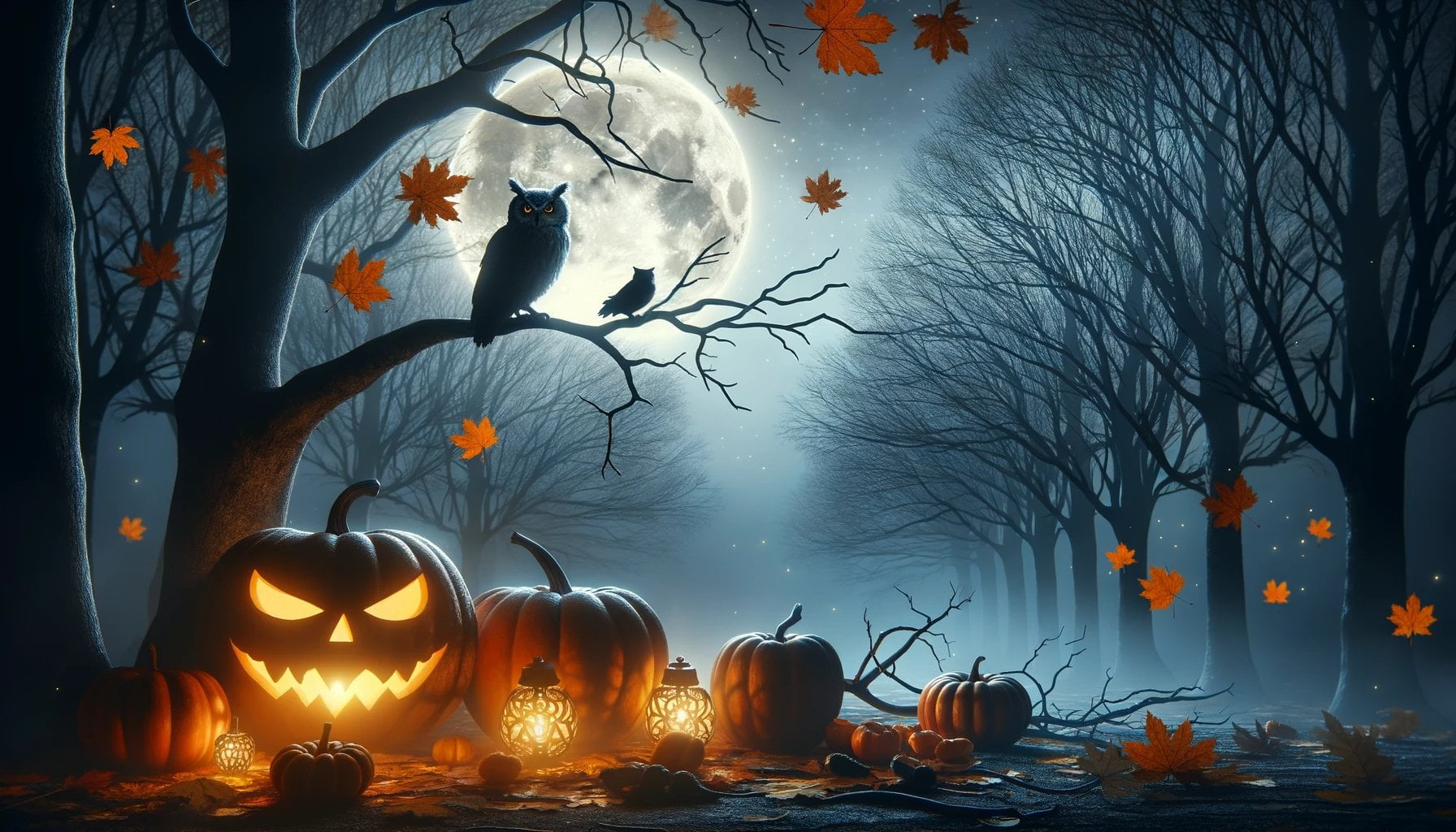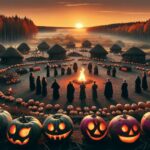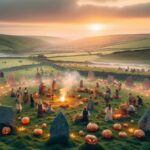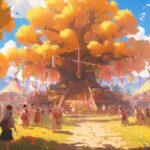Uncover the many secrets and untold tales surrounding the origins and evolution of Halloween in this captivating article. Delve into the fascinating facts about this beloved holiday as we explore its historical significance and cultural roots. From ancient customs to modern traditions, [Fascinating Facts About Halloween: Discover the Origins and Evolution] takes you on a journey through time, revealing the intriguing stories behind one of the most celebrated events of the year.
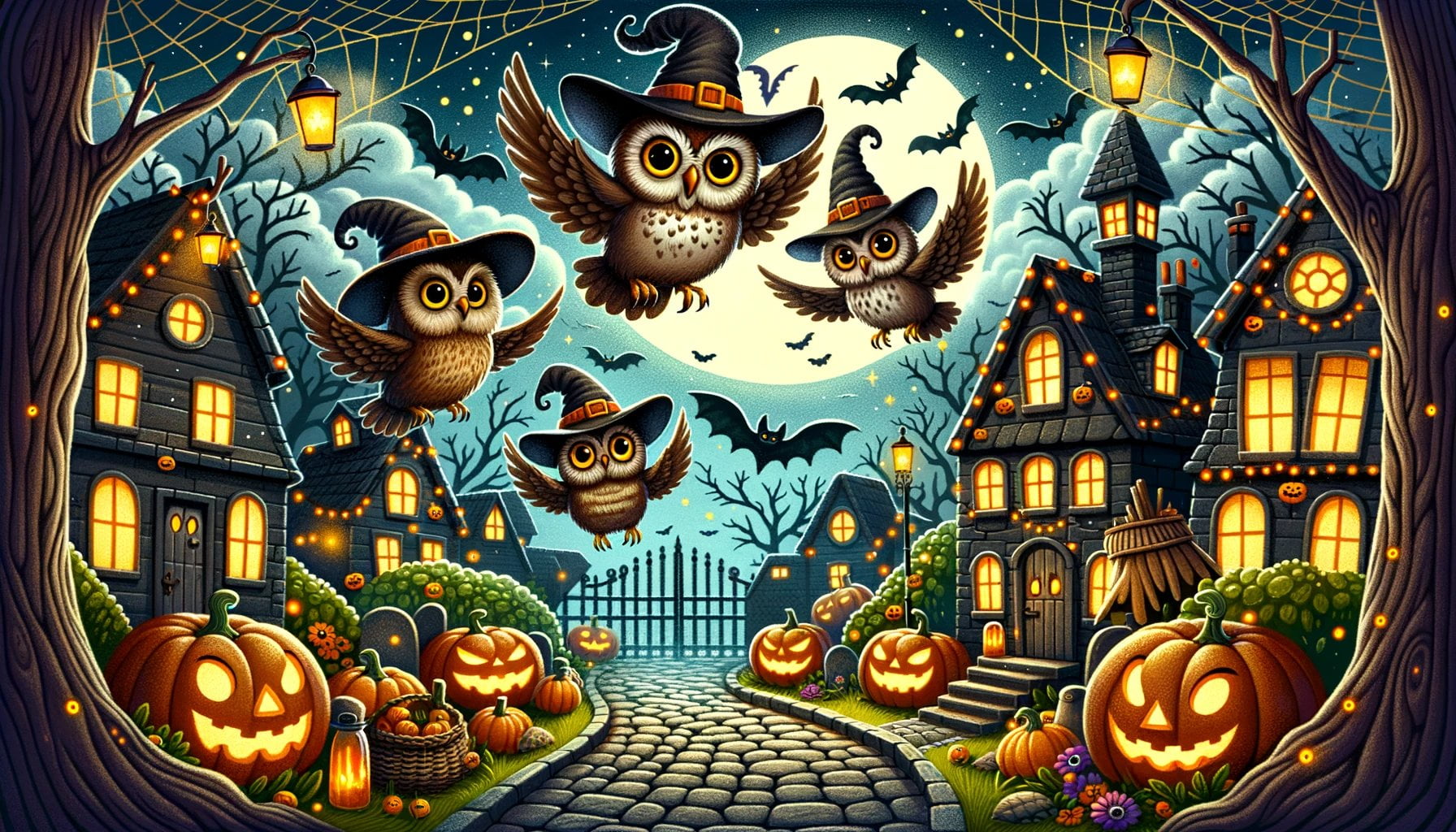
Key Takeaways:
– Halloween is celebrated annually on October 31.
– It originated from the ancient Celtic festival of Samhain, which involved bonfires and costumes to repel ghosts.
– The Roman festival of Pomona also influenced Halloween.
– Halloween is alternatively known as All Hallows’ Eve.
– It marks the beginning of the three-day Allhallowtide season, which culminates in All Souls’ Day.
– Halloween is one of the most popular holidays worldwide.
Fact About Halloween
Halloween, celebrated annually on October 31, is a holiday that has captivated people around the world. But do you know the fascinating facts behind this beloved holiday? In this article, we’ll dive deep into the origins and evolution of Halloween, shedding light on the intriguing aspects that make it so unique.
- Ancient Celtic Roots: Halloween traces its roots back to the ancient Celtic festival of Samhain. On this day, the Celts would light bonfires and wear costumes to ward off wandering spirits. The idea was to protect themselves from the supernatural world that they believed was closest to ours during this time of the year.
- Influence of Pomona: The ancient Roman festival called Pomona, dedicated to the goddess of the harvest, also had an impact on the traditions we associate with Halloween. As the festival celebrated the abundance of the harvest season, it gradually blended with the Celtic Samhain, adding further depth to the Halloween we know today.
- All Hallows’ Eve: Another fascinating fact about Halloween is that it is commonly referred to as All Hallows’ Eve. This name stems from the Christian tradition of Allhallowtide, a three-day observance that begins with Halloween and culminates with All Souls’ Day on November 2. These days are dedicated to remembering the departed souls, emphasizing the connection between the living and the dead.
- International Popularity: Halloween has become one of the most popular holidays worldwide. Its appeal transcends cultures and borders, with people from all walks of life joining in the festivities. Through movies, literature, and various cultural exchanges, Halloween has become a celebration that brings people together in a shared appreciation for the macabre and the mystical.
So, why is Halloween such a beloved holiday? Perhaps it’s the allure of the supernatural, the excitement of dressing up in costumes, or the joy of indulging in delicious treats. Whatever the reason may be, Halloween continues to captivate both young and old, as we honor its ancient Celtic origins while embracing the evolving traditions that have shaped it over the centuries.
In conclusion, Halloween is more than just a day for spooky fun and candy. It is a celebration that connects us to our ancient past, intertwining the mystical with the mundane. As you dive into the festivities each year, take a moment to appreciate the captivating history and cultural significance that make Halloween a truly enchanting holiday.
Sources:
In the spirit of November, have you ever wondered about some fun facts? Discover some interesting things about November by clicking here.
Thanksgiving is a time for delicious food and quality time with loved ones. Uncover intriguing facts about Thanksgiving by clicking here.
Evolution of Halloween Costumes: From Ancient Roots to Modern Creativity
Ancient Roots: Samhain and Celtic Festival
The origins of Halloween costumes can be traced back to the ancient Celtic festival of Samhain, which was celebrated on the night of October 31st. During Samhain, the Celtic people believed that the barrier between the living and the dead was thinned, and they wore costumes and masks to ward off evil spirits and protect themselves [1][2].
Medieval Masquerades: Elaborate Costumes for Social Events
In medieval Europe, particularly during the Renaissance period, elaborate costumes and masks were worn for masquerade balls and other social events. These costumes were often ornate and represented different characters or figures from mythology, history, or fictional tales [1][2].
Victorian Era: Rising Popularity of Halloween Costumes
Halloween costumes gained more popularity during the Victorian era. The Victorians embraced the idea of dressing up for Halloween and incorporated elements of fantasy and imagination into their costumes. However, Halloween was still primarily celebrated by adults at this time [1][2].
Early 20th Century: Commercialization of Halloween Costumes
In the early 20th century, Halloween costumes began to be more commercialized. Costume companies started mass-producing costumes, focusing primarily on children’s costumes. These costumes were often based on popular characters from literature, films, and comic books. Halloween became more accessible to the wider population, and costumes became an integral part of the holiday [1][2].
Mid-20th Century: Growing Popularity among Children
During the mid-20th century, Halloween costumes became increasingly popular among children. Trick-or-treating became a common tradition, and children would dress up in costumes to go door-to-door, collecting candy from their neighbors. The costumes during this period often represented traditional characters, such as witches, ghosts, vampires, and superheroes [1][2].
Modern Day: Diverse and Creative Halloween Costumes
In modern times, Halloween costumes have become more diverse and creative. People are encouraged to embrace their imagination and think outside the box when it comes to costumes. Halloween has become a time for self-expression, and costumes can range from traditional spooky characters to pop culture icons, historical figures, animals, and even inanimate objects. The sky’s the limit when it comes to the creativity of Halloween costumes today [1][2].
Key Takeaways:
- Halloween costumes have evolved over time, starting from ancient Celtic traditions of wearing masks and costumes.
- The Medieval era saw the rise of elaborate costumes and masks worn during masquerade balls.
- In the Victorian era, Halloween costumes gained popularity among adults, incorporating elements of fantasy and imagination.
- The early 20th century marked the commercialization of Halloween costumes, with costume companies mass-producing children’s costumes.
- Halloween costumes became increasingly popular among children during the mid-20th century, coinciding with the tradition of trick-or-treating.
- Modern Halloween costumes offer a wide range of creative possibilities, allowing people to express themselves and portray various characters or concepts.
Sources:
1. CNN – History of the Halloween costume
2. Kinfolk Life – The Evolution of Halloween Costumes
Role of Pumpkins in Halloween: Unveiling the Myth and Tradition
Pumpkins and Halloween go hand in hand, evoking images of glowing jack-o’-lanterns and autumnal festivities. But have you ever wondered why pumpkins became synonymous with this beloved holiday? Let’s delve into the fascinating history and traditions behind the role of pumpkins in Halloween.
The Irish Legend: Stingy Jack and the Turnips
To truly understand the role of pumpkins in Halloween, we must journey back to Ireland and uncover the myth of Stingy Jack. According to an ancient Irish tale, Jack was a cunning trickster who managed to outsmart the devil not once, but twice. When Jack eventually passed away, he was denied entry into both heaven and hell. Left to roam the earth, Jack’s spirit became known as Stingy Jack.
The Irish people, fearing encounters with Stingy Jack’s mischievous soul, devised a plan to repel him. They began carving eerie faces into turnips and placing them outside their homes. These carved turnips, lit with a candle inside, were believed to ward off Stingy Jack and other roaming spirits.
The Transition to Pumpkins in America
When Irish immigrants migrated to America, they brought this tradition with them. However, they quickly discovered that the turnips they used in Ireland were scarce in their new homeland. Instead, they found an abundant and suitable substitute: pumpkins.
From Turnips to Pumpkins: A Long-standing Tradition
With the arrival of pumpkins, the practice of carving frightening faces for Halloween evolved. Pumpkins, with their larger size and easier carving properties, became the perfect canvas for creating menacing jack-o’-lanterns. The glowing pumpkins served not only as a means of scaring away Stingy Jack’s spirit but also as a festive decoration symbolizing the spirit of Halloween.
Key Takeaways:
- The role of pumpkins in Halloween stems from an Irish legend about Stingy Jack, a sly trickster whose spirit was banished to wander the earth.
- The Irish tradition of carving scary faces on turnips to ward off Stingy Jack’s soul transitioned to using pumpkins when Irish immigrants came to America.
- Pumpkins provided a readily available and ideal alternative to turnips due to their larger size and easier carving properties.
- Carving pumpkins into jack-o’-lanterns became a prominent Halloween tradition, symbolizing both the repulsion of malevolent spirits and the festive spirit of the holiday.
Cultural Variations in Halloween Celebrations
Halloween, one of the world’s oldest holidays, is celebrated differently around the globe, with each country adding its own unique traditions and customs to the festivities. Let’s explore some fascinating cultural variations in Halloween celebrations!
Pangangaluluwa – The Philippines
In the Philippines, Pangangaluluwa is the Filipino version of trick-or-treating. Taking place at the end of October or on All Hallows’ Eve, children dress up in costumes and visit their neighbors. But instead of asking for candy, they sing in exchange for prayers and food[^1].
Hungry Ghost Festival – China, Hong Kong, Taiwan, and Singapore
The Hungry Ghost Festival holds great importance in Chinese culture. It is believed that during this time, the gates of the afterlife open, and the spirits of the deceased roam the earth. To appease these wandering spirits, people engage in various activities such as burning paper money and offerings. Elaborate street performances and parades also take place to honor the spirits[^1].
Pchum Ben – Cambodia
In Cambodia, Pchum Ben is a 15-day period of remembrance for deceased ancestors. Families perform religious rituals and visit pagodas to offer prayers and food to their ancestors. It is believed that during this time, the spirits of the ancestors return to bless their descendants[^1].
Gai Jatra – Nepal
Nepal celebrates Gai Jatra, meaning “cow festival,” to honor and remember those who have passed away during the year. Families who have lost loved ones participate in a procession accompanied by a cow, considered a sacred animal. This cow is believed to help guide the souls of the deceased to the afterlife[^1].
Walpurgisnacht – Germany
Germany celebrates Walpurgisnacht, also known as Witches’ Night, on the night of April 30th. It is believed that witches hold a grand gathering on the Brocken mountain during this time. People light bonfires and engage in various traditions such as dancing, singing, and even dressing up as witches[^1].
Fastelavn – Denmark
Denmark has its own version of Halloween called Fastelavn, celebrated on the Sunday or Monday before Ash Wednesday, marking the beginning of Lent. Just like trick-or-treating, children dress up in costumes and go from door to door. They sing traditional songs in exchange for candy, adding a delightful twist to the holiday season[^1].
These are just a few examples of the cultural variations in Halloween celebrations around the world. Each country has its own unique traditions and customs that contribute to the rich diversity of this holiday.
Key Takeaways:
- Pangangaluluwa in the Philippines involves children dressing up in costumes and visiting neighbors to sing in exchange for prayers and food[^1].
- The Hungry Ghost Festival in China, Hong Kong, Taiwan, and Singapore is a time to appease wandering spirits with various activities, including burning paper money and offerings[^1].
- Cambodia’s Pchum Ben is a 15-day period of remembrance for deceased ancestors, involving religious rituals and offering prayers and food to ancestors[^1].
- Nepal’s Gai Jatra honors the deceased by participating in a procession with a cow believed to guide souls to the afterlife[^1].
- Walpurgisnacht in Germany is characterized by bonfires, dancing, singing, and dressing up as witches to celebrate the night when witches gather[^1].
- Fastelavn, Denmark’s version of Halloween, involves children dressing up and going door to door, singing traditional songs in exchange for candy[^1].
Sources:
[^1] SilverKris – Six Halloween-like traditions around the world
[^2] Interproinc – 12 Unique Halloween Traditions Around The World
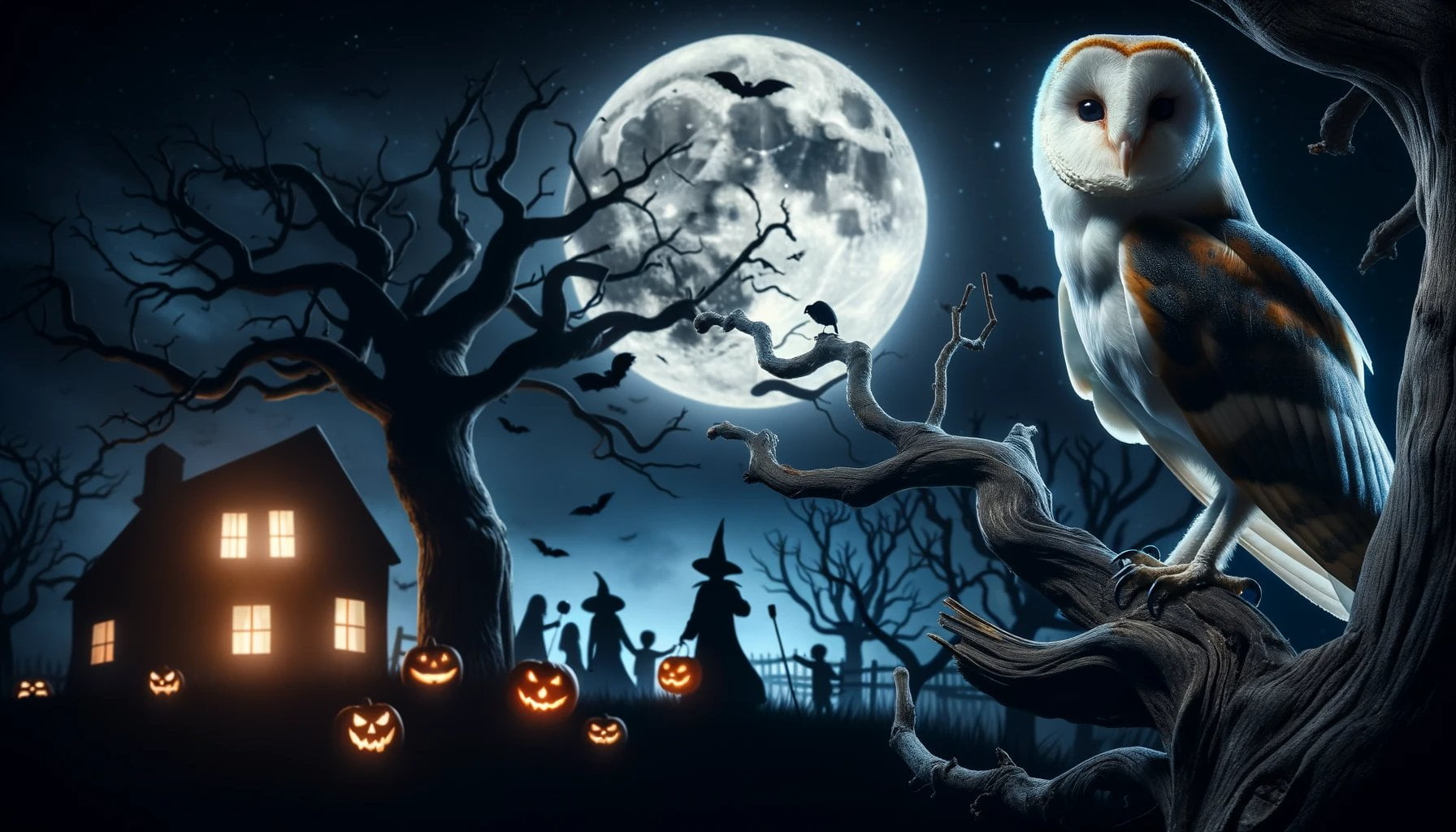
FAQ
Q1: What is the origin of Halloween?
A1: Halloween originated from the ancient Celtic festival of Samhain, which involved lighting bonfires and wearing costumes to ward off ghosts.
Q2: Why is Halloween also known as All Hallows’ Eve?
A2: Halloween is also known as All Hallows’ Eve because it falls on the night before the Christian holiday of All Hallows’ Day or All Saints’ Day.
Q3: How long does the season of Allhallowtide last?
A3: The season of Allhallowtide, which includes Halloween, lasts for three days and concludes with All Souls’ Day.
Q4: Why are pumpkins associated with Halloween?
A4: Pumpkins are associated with Halloween because of an Irish myth about Stingy Jack, a bad spirit who roamed the earth with a lit turnip. The Irish carved scary faces on turnips to keep him away. When Irish immigrants came to America, they used pumpkins instead of turnips because they were more available and suitable for carving.
Q5: How have Halloween costumes evolved over time?
A5: Halloween costumes have evolved over time, with influences from ancient Celtic traditions, medieval masquerades, Victorian era fashion, and early 20th century commercialization. In modern times, Halloween costumes have become more diverse and creative, ranging from traditional spooky characters to pop culture icons and historical figures.
- Sept 31 Myth: Unveiling Calendar Secrets - March 18, 2025
- How Long & Till December 18, 2025: Accurate Countdown Guide - March 18, 2025
- Discover Japanese Artists: A Complete History - March 18, 2025
